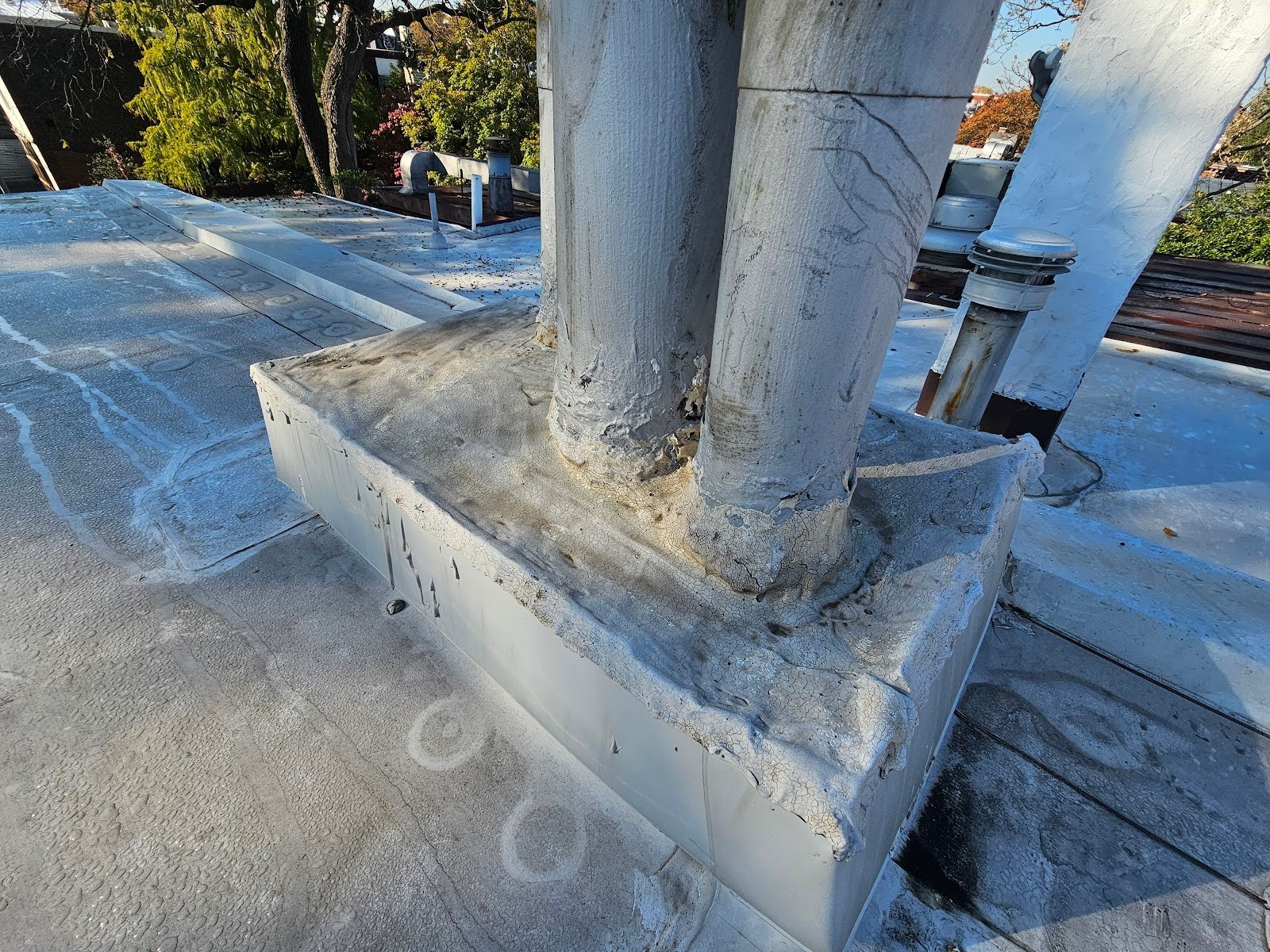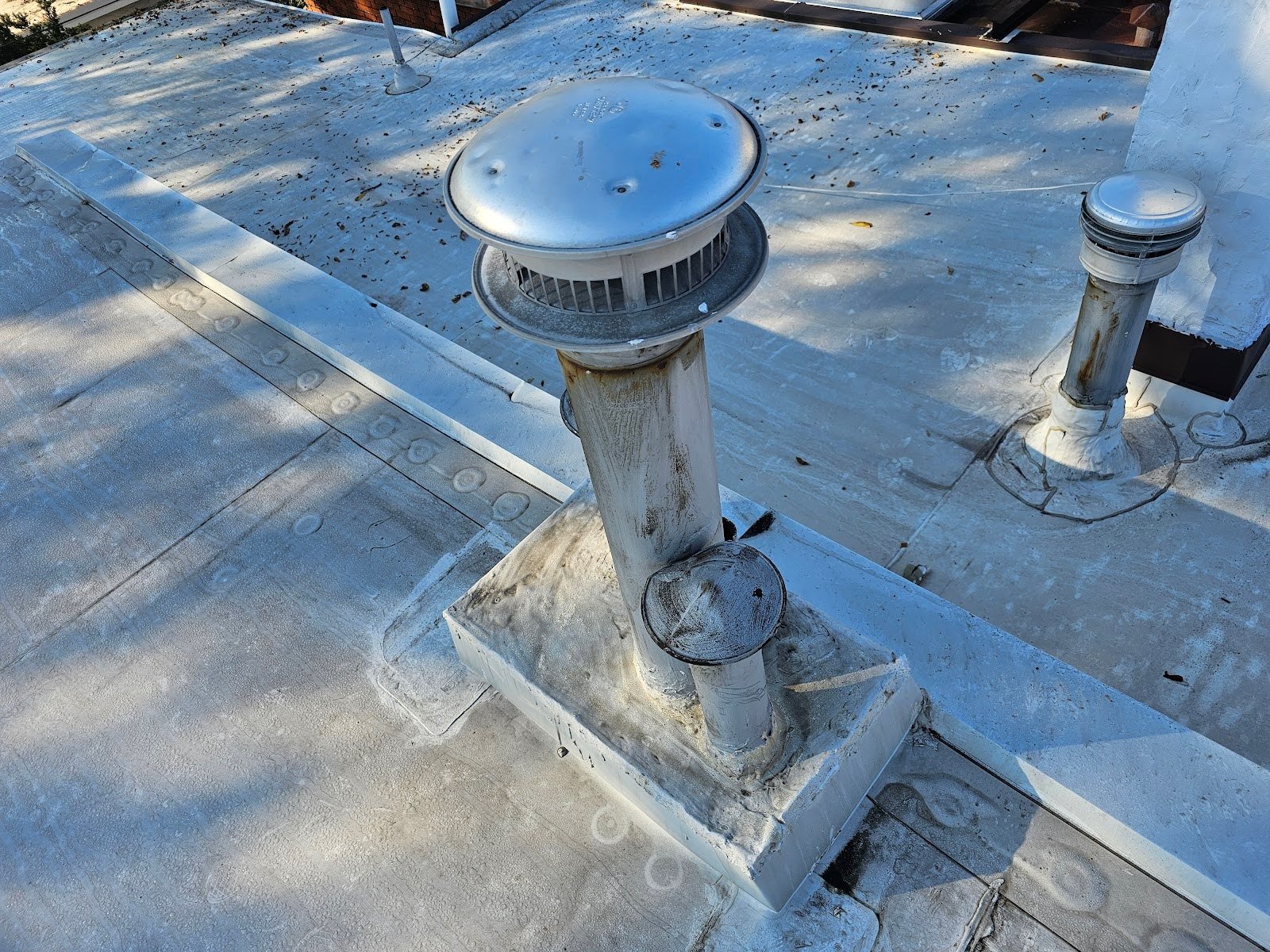Uncovered rooftop chimney flues with expert tips
Our company focuses on and provides roof repair and flat roof replacement. We often end up working on rooftop chimney repair too, though. It’s not that we go looking for this type of work, but often leakage at a roof happens because of problems with the chimney. In most cases these rooftop chimneys pass through the rooftop membrane and or the rooftop membrane has to be built around and/or attached to the chimney to terminate and connect properly.
The picture below shows a chimney with two different flues inside of the chimney. You can really think of this as two separate chimneys that happen to be built together. Each one of them is conveying either exhaust air or ventilation from one area of the house. It’s not a single large element inside of the building that’s exhausting through two different holes at the top of the chimney.
There are examples of that type of configuration, at chimneys where a large fireplace, for example, might exhaust through the top of a chimney at a collection of terracotta pots or vents. Here though, it’s actually two separate chimneys built together as if it’s one. It makes sense, from an economic and pragmatic type perspective. It’s more economic and more efficient to build a single chimney configuration, even if it’s actually two chimneys put together.

In the picture below, you can see the same chimney termination from a different angle. From this angle, it’s easy to see that the two different flues terminated at different heights above the chimney crown. That difference in height is helpful because it allows the two caps to be installed next to each other. In this case, the extending elements of those caps avoid interfering with one another.

These caps are often referred to as simply caps, but they’re also often referred to as spark arrestors. They’re really a cap with an integral spark arrestor. The cap is the obvious top of the elements which provides a cover to keep the majority of rainwater out of the chimney flues. The spark arrestor is the mesh below the cap. That spark arrestor, in the olden days, would keep fireplace embers inside and deter them from drifting out.
If a chimney is used for burning wood, in a fireplace, it can allow embers to float out, if it’s open. Those hot embers can then potentially ignite a fire somewhere else. The mesh allows for protection, when used with a fireplace. Nowadays though, it’s more often used for another important purpose. Animals will look for places to take refuge and build a little home for themselves. Animals will burrow all around parts of the roof of a building, even a flat roof. The spark arrestor, in this case, keeps animals out of the chimney.

By comparison, here’s another example of a similar rooftop chimney with similar terracotta flues extending above the chimney flaunching but no covering to protect the top of the terracotta chimney flue, at all. Open chimneys like this are extremely common at the rooftops of Washington DC.

The picture below shows a set of chimney flues without any type of cover. This is problematic because when water enters into a chimney, from rainwater, it causes damage. That rain water will run down into the chimney and in some cases all the way down to the foundation. When water gets down all the way to the foundation, it will saturate or filter into the masonry elements. There, just like other types of roof leakage, it can cause material deterioration and rot.
The chimney crown, in the picture below, is also deteriorated. You can see a distinct dark shadow between the cementitious crown and the vertical face of the chimney flue. That deterioration allows water to build up in that area between the crown and the flue. When water builds up in that area it will also saturate and cause deterioration of the masonry below. Even though the chimney itself isn’t part of the roof, it matters a lot from a water mitigation perspective.
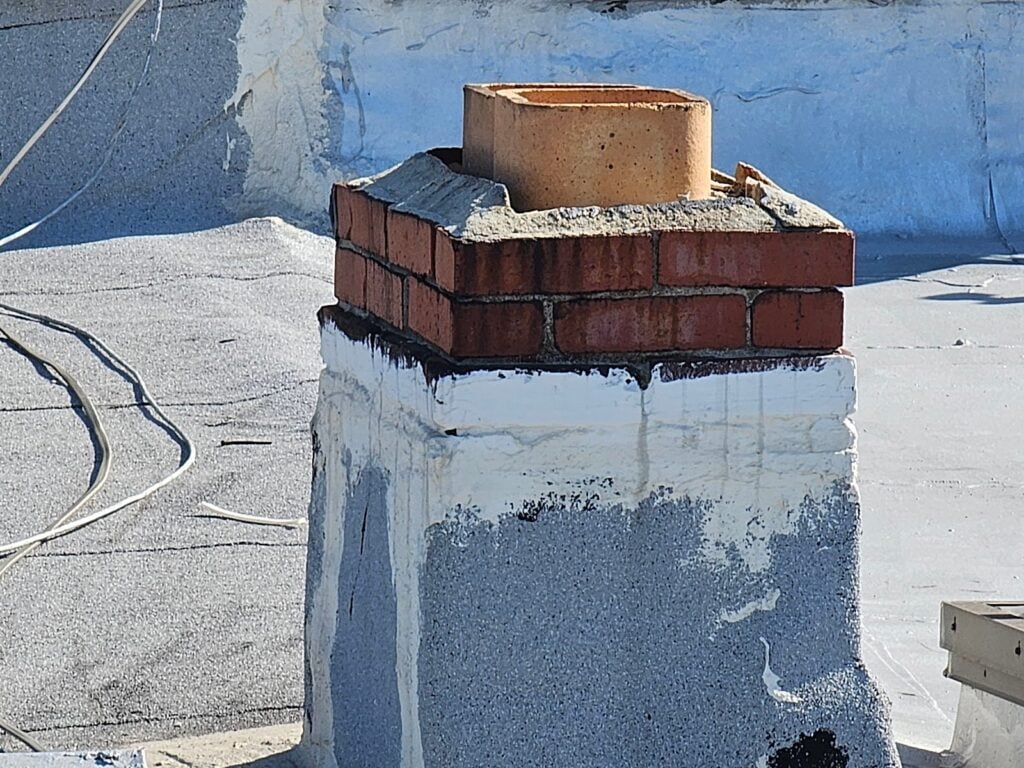
A different but similar type of chimney cap and spark arrestor is shown in the next picture below. Although it’s different from the ones at the top of the article, it’s similar. It works in the same way and has a similar configuration. Here though, the big difference is that this particular chimney cap is made from stainless steel. The ones shown above are made from aluminum. Those aluminum ones are painted black.

The flue next to the one capped with the chimney cap is abandoned and has been covered with a bitumen type of asphaltic covering. For whatever reason, the particular building has stopped using that flue. Just like in roofing though an asphaltic covering like this is not a perfect installation. Asphaltic coverings like this, without an additional type of material to protect them are very susceptible to deterioration associated with exposure to ultraviolet rays.
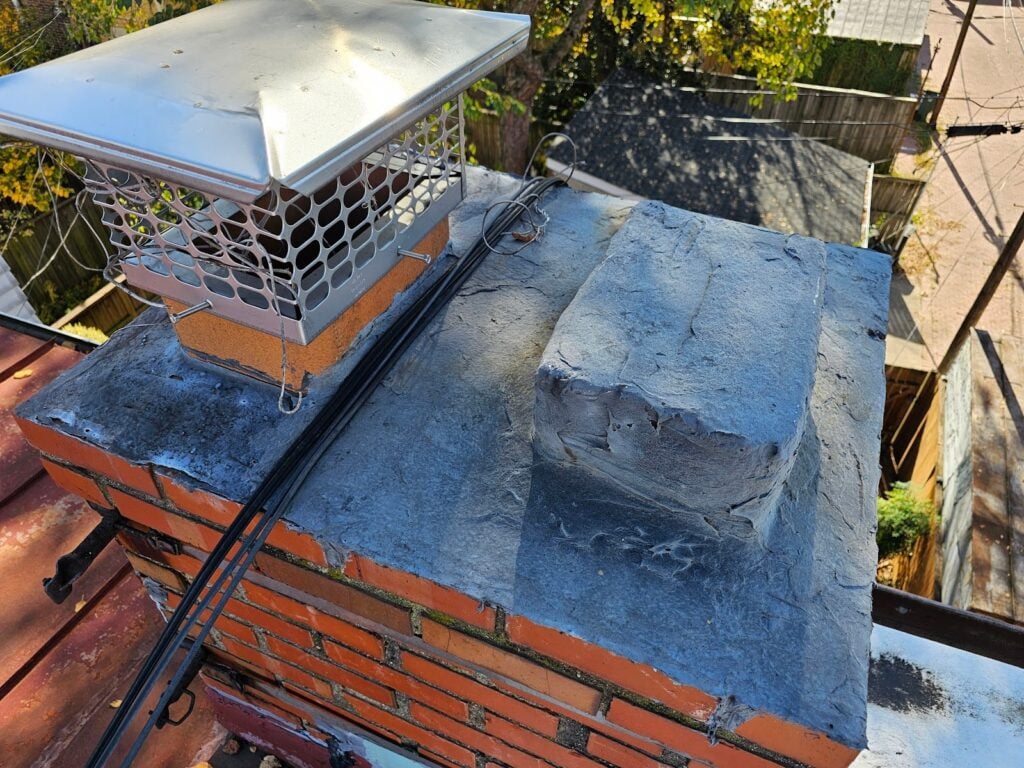
A side by side view follows below.

You can see the early stages of deterioration, taking place in cracking at the planer joints of the asphaltic covering.

This cracking or separation allows water to enter and essentially then traps it. Once the moisture is trapped behind that asphaltic covering, it causes damage through slow deterioration.

The next picture below shows separation and delamination of the asphaltic covering at the edge of the top of the chimney.
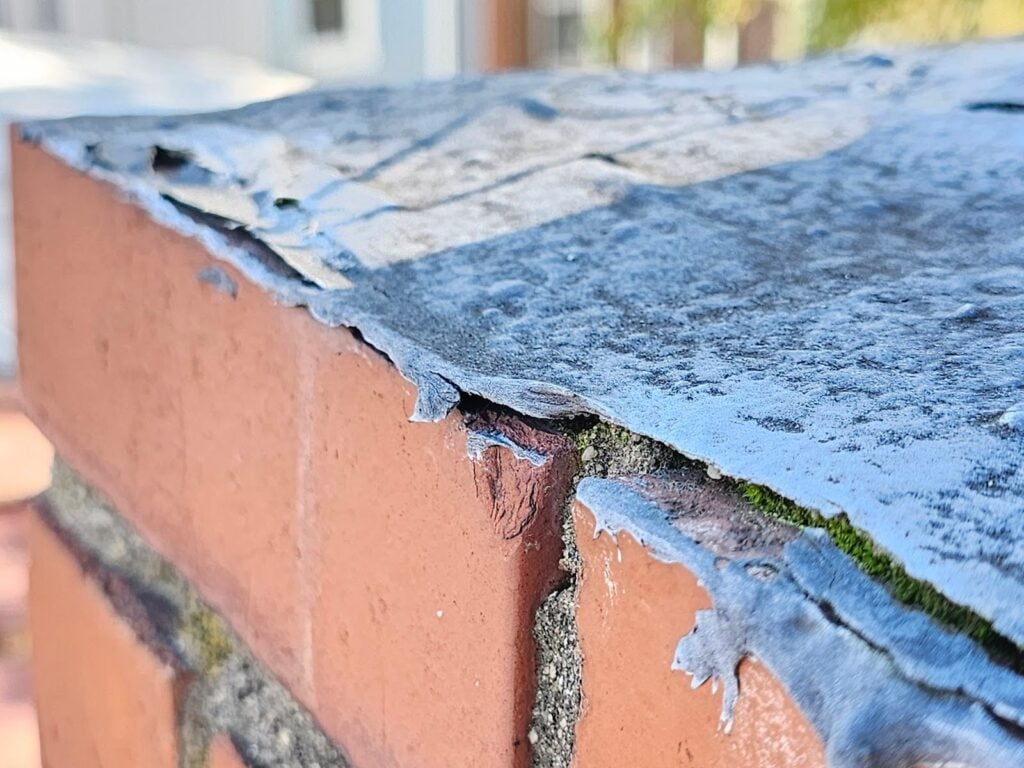
We provide this information here on our blog, and our website, to help our customers and future clients, and we recommend every building owner in DC who values the longevity of their roof (and their investments) and building use a contractor who values the simple and important principles of proper roof construction like Dupont Roofing DC. Our company specializes in flat roofing here in Washington DC and we’re happy to help building owners of almost all types.
Learn more about our company and the proper techniques of working with roofing on historic buildings in Washington DC here on our blog at DupontRoofingDC.com, and you can call us at (202) 840-8698 and email us at dupontroofingdc@gmail.com. We are happy to help and at least talk through options.


